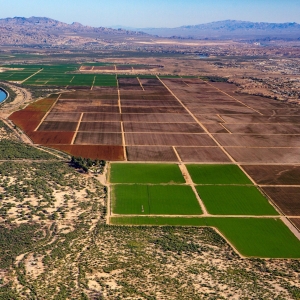The Stream, December 10, 2020: Supporters, Opponents of Line 5 Debate In Public Hearing
GLOBAL DAILY WATER NEWS
- The Army Corps of Engineers holds a public hearing over the future of Enbridge’s Line 5 in Michigan.
- Agricultural runoff is contributing to water pollution in communities of color in parts of California.
- Streets in Venice, Italy are flooded before newly installed flood gates are activated.
- Water sampling from city officials and an activist group in Cape Town, South Africa show contradictory E. coli levels in discharge from a local wastewater treatment plant.
Detroit, Michigan extends its water shutoff moratorium until at least 2022.
“The shutoff moratorium issued by the Michigan Department of Health and Human Services ends in 23 days, but not here in Detroit.” – Gary Brown, director of Detroit’s water and sewage department. The city of Detroit announced on Tuesday that it will be continuing a moratorium on water shutoffs until 2022, the Detroit Free Press reports. In time, the city also plans to phase out water shutoffs altogether and has recruited Detroit’s former public health director Dr. Abdul El-Sayed to help identify funding to prevent future water shutoffs. Local activists have been pushing for an end to water shutoffs for years, joining a broader movement to end the practice. In 2014, the United Nations called the shutoffs a “violation of the most basic human rights of those residents,” a sentiment that has been bolstered by the Covid-19 pandemic.
In context:
IN RECENT WATER NEWS
Water crises, in many ways, are not like a pandemic, an event with a single, triggering cause. They are more diffuse and multi-faceted, and an individual crisis is usually constrained, not reverberating globally. But like the pandemic, water crises stem from environmental neglect and failures of leadership, and the repercussions of both are becoming more apparent every year.
2020 was no different.
All years impose their discomforts. This year, in truth, stood out. Not just for the trials of the last 12 months. But as evidence of the tests yet to come. Environmental challenges of water, climate, and health are real and growing — visible for those who want to see them.
In Case You Missed It:
In the Northern Great Plains, A Search for Ways to Protect Drinking Water from Fossil Fuel Industry Pollution – North Dakota’s water supplies are at risk from contaminants from fracking wastewater, but residents are fighting back.
Communities of Color Disproportionately Affected by Water Pollution In The San Joaquin Valley
Agricultural runoff from fertilizer and manure in the San Joaquin Valley in California has contributed to some of the highest levels of nitrate pollution in community water systems in the United States. The Fresno Bee reports that this is especially true in communities of color where Anne Weis Schechinger, a senior analyst of economics with the Environmental Working Group, said many farmworkers “are drinking water contaminated by the very farms that employ them.” Rural areas often lack funding to update and manage drinking water infrastructure and sewer systems, leaving residents more vulnerable to contaminated water sources. Water injustice in rural, Latinx and Black communities, Fresno Bee reports, is part of a longstanding problem stemming from all levels of government in California. Policies are becoming more inclusive, but activists and politicians say the state has a long way to go.
In context: In Bid for Cleaner Water, California Seeks Arranged Utility Marriages
TODAY’S TOP WATER STORIES, TOLD IN NUMBERS
78 FLOOD GATES
A system of 78 flood gates in Venice, Italy were unable to activate before water reached a 145 cm (4.8 feet) peak and flooded the city on Tuesday. The system, known as Mose, operates only if a waters reach 130 cm (4.3 feet), Reuters reports. Forecasts had predicted the rains would not reach those levels, but authorities were caught off guard as waters rose due to strong sirocco winds from Croatia that flooded two rivers near the sea around Venice. Luigi Brugnaro, the city’s mayor, called for more rapid and reactive protocols for Mose in order to face sudden weather changes. High tides in Venice have become more common over the years due to rising sea levels and land subsidence that has caused the ground level of the city to sink.
4 MILES (6.4 KILOMETERS)
The Army Corps of Engineers held a public hearing over the future of Enbridge’s Line 5, the proposed 4-mile (6.4-kilometer) oil pipeline under the Straights of Mackinac. The Associated Press reports that opponents of the proposal focused on adverse environmental risk, while supporters said approving the plan could boost Michigan’s economy. Enbridge still needs permits under the federal Clean Water Act and a state permit from the Michigan Department of Environment, Great Lakes and Energy to complete the pipeline. Army Corps officials said they’re reviewing how a recent order from Michigan Gov. Gretchen Whitmer mandating the shutdown of the pipeline within 180 days will affect their review of Enbridge’s application.
ON THE RADAR
GroundUp reports that the city of Cape Town, South Africa is disputing the accuracy of new water tests conducted by the Organisation Undoing Tax Abuse (OUTA) that show high levels of E. coli being discharged from the Potsdam Wastewater Treatment Works in Milnerton. Xanthea Limberg, Cape Town’s Mayoral Committee Member for Water and Waste, said that OUTA’s sampling had been conducted a reed bed wall adjacent to the plant that had recently collapsed and was not part of Potsdam operations. Cape Town officials have been testing discharge from the wastewater treatment plan since April, after the Western Cape Government ordered the city to present plans to deal with unacceptable levels of pollution.
Jane is a Communications Associate for Circle of Blue. She writes The Stream and has covered domestic and international water issues for Circle of Blue. She is a recent graduate of Grand Valley State University, where she studied Multimedia Journalism and Women, Gender and Sexuality Studies. During her time at Grand Valley, she was the host of the Community Service Learning Center podcast Be the Change. Currently based in Grand Rapids, Michigan, Jane enjoys listening to music, reading and spending time outdoors.






Leave a Reply
Want to join the discussion?Feel free to contribute!